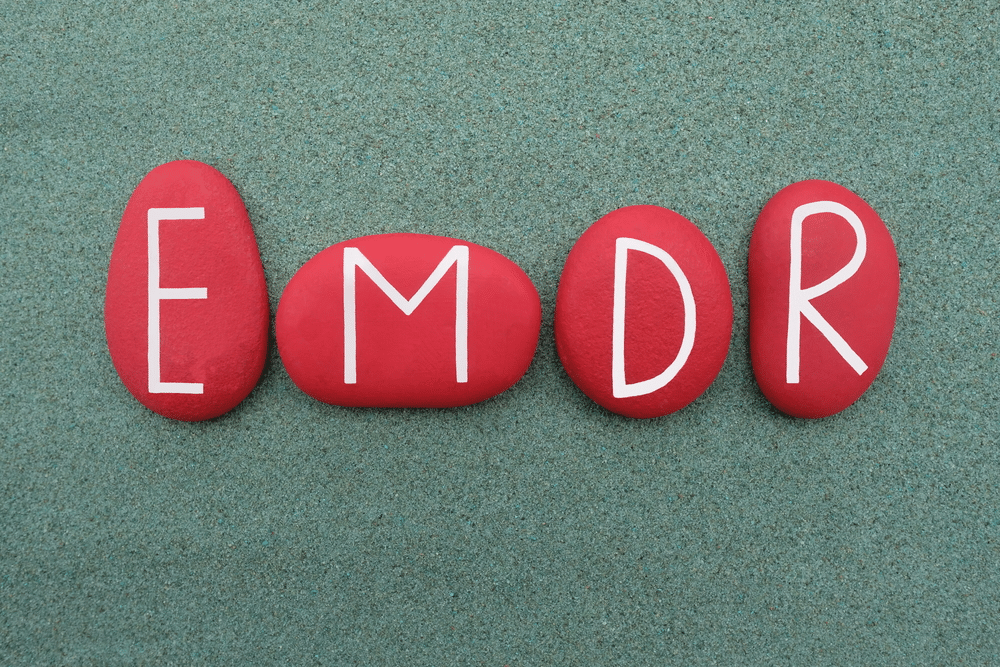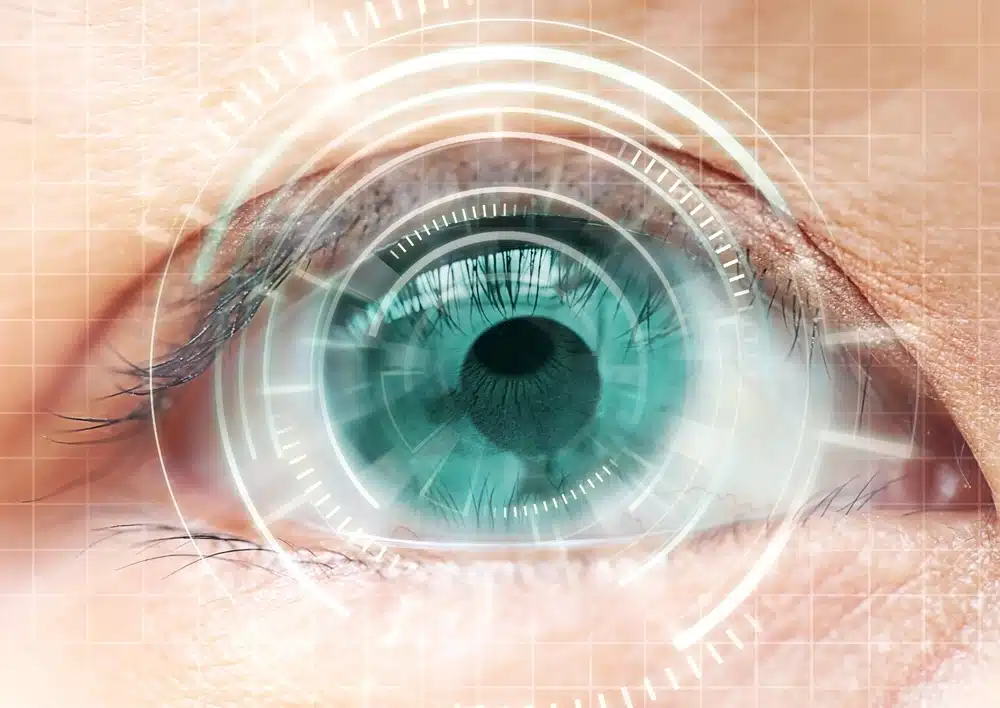What is Eye Movement Desensitization and Reprocessing Therapy?
Eye Movement Desensitization and Reprocessing Therapy (EMDR) is a type of psychotherapy treatment approach that was developed by American Psychologist, Francine Shapiro in 1987 to enhance the psychological services available for addressing trauma, anxiety disorders, stress, and substance abuse.
During EMDR therapy patients recall emotionally and painful memories or thoughts with their EMDR therapists while being exposed to external stimuli such as audio. Bilateral stimulation, a hallmark of the therapy, will then be done, which involves lateral eye movements. Lateral eye movements occur during this type of therapy, which accesses a person’s traumatic events memory network, enhancing the recollection and processing of information between traumatic memories and more adaptive memories or information.
After successful treatment with EMDR therapy, people have experienced new positive associations and thoughts, relief of distress, their negative thoughts redirected, and a significant reduction in physical sensations related to anxiety.

History of Eye Movement Desensitization and Reprocessing Therapy
One day in 1987, Psychologist Francine Shapiro was walking in the park when she realized that moving her eyes seemed to decrease the negative emotions she was constantly feeling when distressing memories or past traumatic experiences would creep into her brain.
Due to her experience and revelation, she decided to test her hypothesis on other people showing psychological and physical symptoms of anxiety and emotional distress. Results showed that those suffering from any sort of anxiety and/or past trauma became desensitized and responded the same way to the distress when experiencing eye movements.
However, Shapiro knew that eye movement alone did not result in therapeutic effects, and therefore, she began to use other treatment modalities in conjunction with EMDR therapy, such as Cognitive-Behavioral Therapy (CBT) , a type of traditional talk therapy. The lightbulb went off, and a day in the park became a successful psychological development for treating debilitating anxiety and stress called
It became apparent to her, however, that eye movements by themselves did not create comprehensive therapeutic effects. With that notion, Shapiro knew that she was onto something huge, and added other treatment elements and conducted workshops that she knew would be effective together. This included a cognitive component and developed a standard procedure that she coined Eye Movement Desensitization and Reprocessing Therapy or EMDR.
After proving EMDR to be successful, Shapiro wrote a dissertation stating that the procedure was sufficient enough to desensitize those suffering from mental illness such as Posttraumatic stress disorder, as it alters the regions in the brain that are responsible for cognitive ability (thinking). EMDR cannot cure Post-Traumatic Stress Disorder and anxiety is one-sitting. The procedure does not eliminate all symptoms or complications, but it does make them less intense, making the conditions more manageable and easier to cope with.
What Does EMDR Treat?
Eye Movement Desensitization and Reprocessing Therapy is a useful addition to traditional mental health care therapy programs. It is effective in treating addiction disorders as well as many conditions that might have contributed to the client developing the addiction disorder such as a mental health disorder or chronic pain. It is important to try many different types of therapy so that you will have the right skill sets in your recovery toolbox when you are tempted to relapse.
The Structure of EMDR Therapy

Eye Movement Desensitization and Reprocessing Therapy involves 8 steps or phases for treatment. It is important to work with a licensed EMDR therapist. EMDR is more complicated than eye movement and exploring traumatic event memories. Like all therapeutic practices, it might be harmful to attempt an at-home treatment without a licensed professional. The 8 phases of EMDR are:
Medical History and Intake
The EMDR professional and patient go through the patient’s life experiences, past trauma or even their negative beliefs and decide which memories to target for treatment.
Preparation
The therapist explains the EMDR process in full to the patient. They will explain how bilateral eye movement, moving the eyes side to side, is related to EMDR therapy and why it is effective. It will also be explained that eye movement is not the only method. Some therapists use hand tapping or auditory stimulation, or deliberate noises. The purpose is to get the client to focus on both the external stimuli, what is going on outside themselves, as well as focusing on their internal stimuli, the memories that are being worked out.
Assessment
The distressing memories that the therapist and patient have agreed to target is brought to mind and the memory is evaluated based on how distressing it is. This is helped by using the Validity of Cognition (VOC) scale and Subjective Units of Disturbance (SUD) scale questionnaires which the therapist evaluates.
Desensitization
The bulk of the EMDR therapy is worked on in this stage. The EMDR therapist and patient work through EMDR techniques such as eye movement or hand tapping to reprocess traumatic memories and help the patient heal. The patient shares any new thoughts brought up by the desensitization and those thoughts are usually addressed in the next session until the memory is no longer distressing.
Installation
Positive connections are made in the patient’s memory. Unlike other treatments such asCognitive-Behavioral Therapy(CBT) the troubling thoughts or thought patterns are not being directly targeted. Instead, EMDR seeks to help the patient start to heal by helping them overcome harmful adaptations that the brain decided to employ to try to shield itself from the trauma and distress
Body Scan
A body scan will be done at treatment centers wherein the patient is asked to evaluate their physical responses to the desensitization while thinking about the distressing incident and the installation process used. If there is distress the therapist works through it with the patient using more Eye Movement Desensitization and Reprocessing techniques to help the client process the memory.
Closure
Closure is used at the end of the session. If the distressing memories were not fully dealt with during the session the therapist provides strategies to help the client until the next session when more progress can be made. These techniques might not be needed if the memory was fully dealt with in that session.
Reevaluation
The patient is evaluated and the primary and secondary EMDR therapist determines if the progress made in the last session has stuck or if further work is needed on that memory.
Co-occurring Disorders and EMDR
Eye Movement Desensitization and Reprocessing Therapy can also be used to treat co-occurring disorders. Co-occurring disorders, also known as dual diagnosis, is a condition in which an addiction disorder occurs at the same time and in the same individual as another mental health disorder. EMDR is especially useful as some people have negative reactions to psychiatric medications and EMDR does not use any medication. This does not mean that EMDR is a substitute for psychiatric medications when the patient needs them.

EMDR Therapists Do Not Know Exactly How EMDR Works
Because psychology is still in its early stages there is much debate about why or how EMDR therapy works. This is not uncommon in mental health. However, there is a lot of proof that although we don’t know exactly how EMDR works that it does work.
Our bodies and minds are still mostly a mystery to humans and many psychiatric and nonpsychiatric treatments are shown to be beneficial for reasons that humans do not yet fully understand. Even the developers, EMDR therapists and other scientists behind these treatments do not know exactly why they work. This does not mean that there are not well thought out theories.
Possible Side Effects of EMDR therapy
Fortunately, there are very few risks to EMDR. Because EMDR does not involve any medication there isn’t the possibility of a medical interaction between medications or unpleasant medication-related side effects.
If there is a risk of problems between sessions your EMDR therapist will give you the tools needed for you to be able to wait until the next appointment. If you are undergoing residential treatment our staff will be there to help you during that time together with your EMDR therapist. Some of the risks of EMDR are:
- Lightheadedness
- Heightened sensations, both physical and emotional, during sessions
- Vivid dreams
- New traumatic memories might resurface

EMDR Can Treat Many Health Disorders
EMDR is very effective for many disorders. Surprisingly one of the areas that EMDR is effective in is treating chronic pain. Some of the conditions that can be improved with EMDR are:
EMDR was originally developed to help treat PTSD. Up to 59% of young people who suffer from PTSD symptoms develop a substance use disorder. PTSD is not limited to soldiers coming from active duty in a conflict zone. Many people develop PTSD because they are the victims of:

Mental Health Problems Can Develop Later in Life
Many of these conditions, on their own, can also cause depression. There are many types of depression including situational depression. Although it is the popular name for that type of depression it is more formally called Stress Response Syndrome (SRS). Suffering from an addiction disorder might influence someone to develop situational depression. Luckily situational depression distress can ease once the person is out of the stressful situation.
Unfortunately, some people with situational depression end up going back to a stressful situation after treatment. Pain from any sort of depression can cause someone to relapse to self-medicate and escape the pain.
EMDR therapy for depression can help the person become more resilient and develop coping skills even if they have to go back to that distressing situation. That does not mean that EMDR therapy will make going into distressing situations safe. EMDR therapy for depression can help patients find relief from other types of depression as well as situational depression.
EMDR’s Success Has Been Proven Through Evidence-Based Research
There is international recognition of EMDR’s effectiveness through evidence-based research studies and endorsed by various credible organizations. It is recognized by the Veterans Affairs (VA) medical division as one of the best ways for treating PTSD. The VA is a part of the United States of America’s government that is responsible for military veterans and their care, acknowledges the value of EMDR in addressing PTSD in veteran alcohol rehab and drug rehab. Other institutions that approve of EMDR treatment are:
EMDR Works in Tandem With Other Therapies
At Behavioral Health Centers our substance abuse treatment center provides a variety of therapies that work well in conjunction with Eye Movement Desensitization and Reprocessing Therapy. EMDR therapy sessions are often 90 minutes or less. This allows for other types of therapies to be utilized, such as:
- Neurobehavioral Therapy
- Family Therapy
- Individual Therapy
- Dialectical Behavioral Therapy (DBT)
- Group therapy
- Cognitive-Behavioral Therapy (CBT)
- Behavioral Therapy
Our treatment process starts with medical health professionals evaluating you and your needs to find the right treatment plan for you. This includes finding which therapies will be the most beneficial to you. These therapies will be brought to the forefront of your treatment day. EMDR complements other therapies. EMDR therapy sessions, when used at the same time as other therapies at treatment facilities, can become even more helpful.
We, at Behavioral Health Centers, offer state-of-the-art care including EMDR therapy to treat addiction and psychological trauma. Our top-of-the-line care takes into account all of our client’s needs from residential care to our online treatment program. With addiction treatment, you can improve your life. You can get back to your life before addiction took hold. Often people improve their lives even further as any co-occurring disorders they might have are also treated.
To learn more about how our outpatient treatment services for mental health and our inpatient programs for mental health employ EMDR therapy, contact us today. Remember you are not alone!




